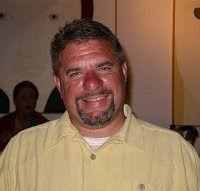The following originally appeared in Action Online, the magazine of the United Spinal Association.
Researchers for the first time have induced robust regeneration of nerve tissue connections in injured adult spinal cord sites that control voluntary movement. These findings provide hope that it may be possible to design therapies for paralysis and other impairments of motor function arising from spinal cord injury.
In rodent studies, the Children’s Hospital Boston, UC Irvine, and UC San Diego team made this breakthrough by turning back the developmental clock in a molecular pathway critical for the growth of nerves in the corticospinal tract. The corticospinal tract is a bundle of nerves connecting the brain and spinal cord. While some degree of nerve regeneration has been achieved in other regions of the mature central nervous system (CNS), adult corticospinal nerves have been particularly resistant to regeneration after injury.
The corticospinal nerve regeneration was achieved by deleting PTEN, an enzyme that acts as a critical brake on cell growth. One of the key growth molecules whose activity can be reined in by PTEN is mTOR. In early stages of life, PTEN activity is low, allowing mTOR to promote developmental growth processes. In later stages, PTEN activity is increased and mTOR activity is decreased so that growth is more restricted.
In looking at how to restore early developmental-stage cell growth in injured CNS tissue, Zhigang He, a neurology associate professor at Children’s Hospital Boston–working with Mustafa Sahin, also of the Children’s Neurology Department–showed in a 2008 study that modulating the PTEN/mTOR pathway enabled regeneration of new connections from the eye to the brain after optic nerve damage. He is now partnered with Oswald Stewart from UCI and Binhai Zheng of UCSD to use the same approach to induce nerve regeneration in injured spinal cord sites. Results of their study appear in the Aug. 8 online edition of Nature Neuroscience.
“Until now, such nerve regeneration has been impossible in the spinal cord,” says Oswald Steward, anatomy & neurobiology professor and director of the Reeve-Irvine Research Center at UCI. “Paralysis and loss of function from spinal cord injury has been considered untreatable, but our discovery points the way toward a pathway to develop a therapy to induce regeneration of nerve connections following spinal cord injury in people.”


No comments:
Post a Comment